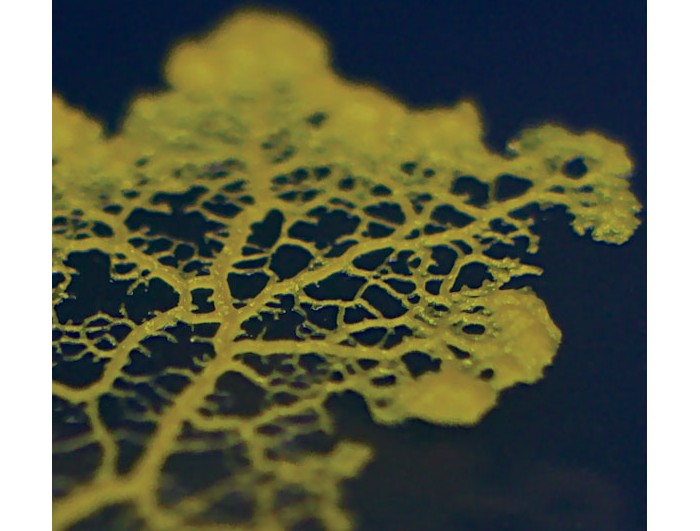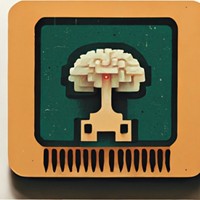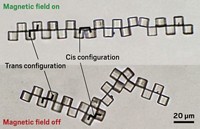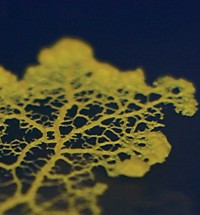Advertisement
Grab your lab coat. Let's get started
Welcome!
Welcome!
Create an account below to get 6 C&EN articles per month, receive newsletters and more - all free.
It seems this is your first time logging in online. Please enter the following information to continue.
As an ACS member you automatically get access to this site. All we need is few more details to create your reading experience.
Not you? Sign in with a different account.
Not you? Sign in with a different account.
ERROR 1
ERROR 1
ERROR 2
ERROR 2
ERROR 2
ERROR 2
ERROR 2
Password and Confirm password must match.
If you have an ACS member number, please enter it here so we can link this account to your membership. (optional)
ERROR 2
ACS values your privacy. By submitting your information, you are gaining access to C&EN and subscribing to our weekly newsletter. We use the information you provide to make your reading experience better, and we will never sell your data to third party members.
Chemical Communication
How a slime mold reorganizes around food
Network of channels changes form quickly in response to a nutrient source
by Viviane Callier, special to C&EN
February 27, 2021
| A version of this story appeared in
Volume 99, Issue 7

For organisms without brains, slime molds show an impressive array of problem-solving behaviors: they can solve mazes and even figure out the optimal layout for the railway system connecting cities around Tokyo–a feat documented by researchers in 2010. Yet the physiological mechanisms that produce this seemingly intelligent behavior are not understood. Now a study from a team of researchers at the Max Planck Institute for Dynamics and Self-Organization has developed a model for how slime molds organize their branching tubes around food sources (Proc. Natl. Acad. Sci. U.S.A. 2021: DOI: 10.1073/pnas.2007815118).
“We’re one step closer to understanding the mechanisms by which the slime mold is able to make these sophisticated decisions and adapt its network in a very efficient way,” says Chris Reid, a complex systems researcher at the Macquarie University in Sydney, Australia, who was not a part of the study.
Slime molds are single-celled organisms that organize themselves into branching networks of tubes. The tubes, structurally supported by actin and myosin filaments, pulse with tiny contractions that drive cellular fluid through the network. This fluid motion can rapidly carry signals from one end of the network to another, allowing coordinated behavior as the slime mold hunts for food.
To better understand how the organism responds to food sources, Mirna Kramar and Karen Alim fed the Physarum polycephalum slime molds by putting piles of dead bacteria at different spots on a petri dish and observing how the organisms navigated to find and eat them. The slime mold’s leading edge closest to the food responded by becoming soft and pliable, causing the intracellular fluid to bulge out front—much like a balloon would bulge if one part of its rubber were thinner and softer than another. This bulging propels the slime mold toward food and widens the tubes’ diameter. Meanwhile stiffer tubes far from food shrink and are disassembled.
The question, then, is what controls the pliability of the leading edge? The researchers hypothesize that the slime mold produces an unknown chemical signal when it encounters food that prevents the assembly of actin and myosin filaments and causes the tubes to soften. Thus a memory of the location of the food is encoded in the size and layout of tubes of the network, which quickly respond to food sources, Kramar explains. The researchers used a mathematical model to show that their chemical signal-driven hypothesis could accurately reproduce the behavior of the slime mold’s branching tubes in response to food.
The team is now trying to identify the chemical signal. Kramar says that it’s likely to be a known biochemical molecule—even as simple as adenosine triphosphate, which organisms use to store food energy.
Reid agrees that the team’s observations are consistent with their chemical cue hypothesis, though he suggests that there could be other explanations.





Join the conversation
Contact the reporter
Submit a Letter to the Editor for publication
Engage with us on Twitter